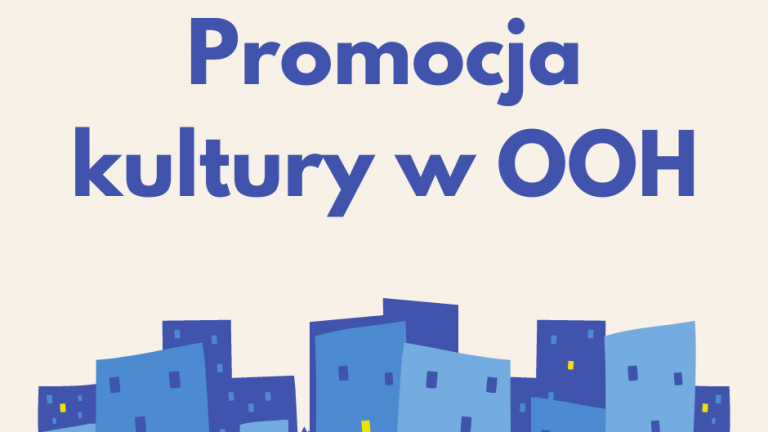
Festivals of various nature: music, film, theater, as well as performances, concerts, revues and exhibitions create our cultural environment. Cultural institutions and representatives of the so-called The leisure industry tries to provide customers with cultural entertainment tailored to various tastes and expectations. You could say: there's a lot going on in culture! And very well. After all, it is an important element of our socio-economic life. By listening to music, reading books, going to the cinema and museums or taking part in performances, we develop, get to know the world, and shape our views. In order for cultural events to find their audience and enjoy interest and, consequently, high attendance, it is worth promoting them appropriately. And we know how to do it!
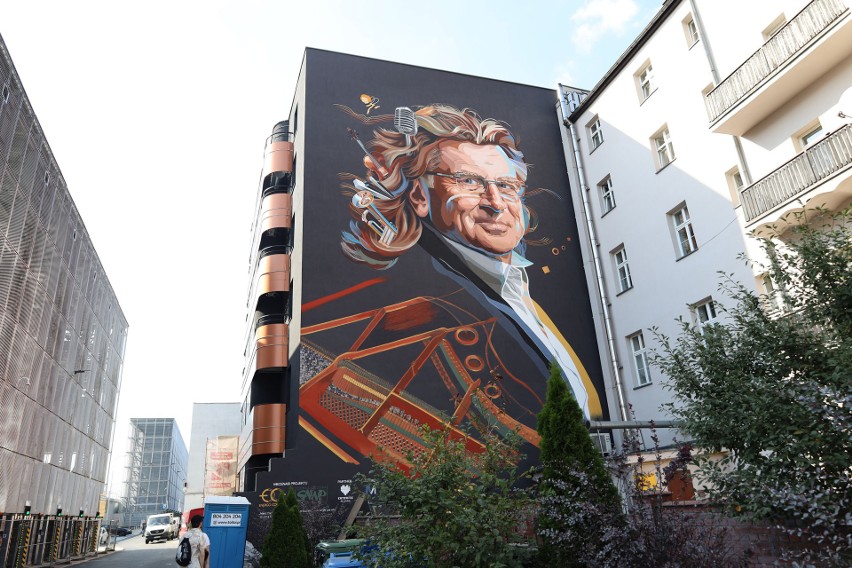
Mural by Zbigniew Wodecki, unveiled on September 5, 2023 at ul. Tylna Mariacka in Katowice. Source: https://dziennikwest.pl
OOH advertising
It is no coincidence that we recommend outdoor advertising in particular to promote cultural events. OOH (out-of-home) advertising makes it possible to deliver a message to recipients in places where they are currently located: in the city, at public transport stops, on posters, on the walls of buildings (murals) and - as part of the so-called transit advertising – also on public transport vehicles and inside them. Transit advertising has a number of advantages and features that make it very often used to promote cultural events by their organizers. First of all, it allows for any start and end date of the campaign. You can therefore adjust it to the date of a specific event and start broadcasting messages on any selected date. If, for example, the organizer of a cultural event decides that active promotion should start one and a half months before the event, we can do it. If it is to be 3 weeks, we also have this option. In this respect, we do not have to adapt to the dates set in the calendar, which means that we do not have to rigidly schedule the campaign at the beginning and end of the calendar month.
Moreover, transit advertising is active advertising that somehow "follows" the recipient, "follows" him (in the most positive sense of the word), and moves just like people move. In other words: it is advertising that actively seeks out its audience and goes where they are. It is also worth emphasizing that this advertising reaches places where there is a lack of system media, e.g. in very city centers. If there is a need to reach locations with a message where there are no traditional outdoor media, such as billboards, advertising poles, light boards or citylights, transit advertising is the only and best solution.
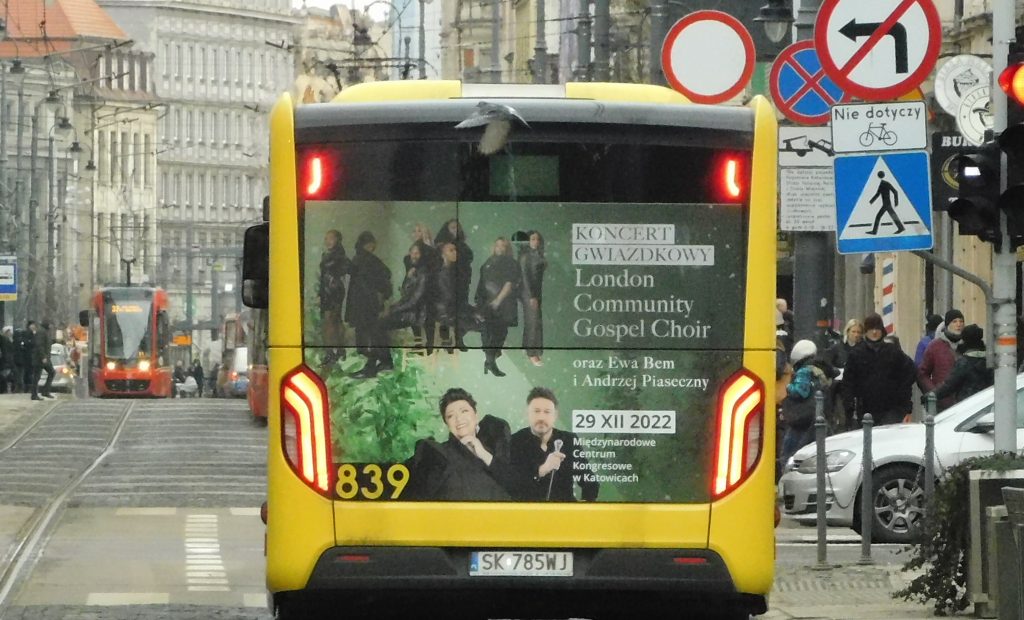
Fullback with advertising for the Christmas Concert (December 2022 campaign)
Rawa Blues on the tracks, Van Gogh on the buses
Festivals, concerts, museum exhibitions and other cultural events are often hosted on trams with their graphics. In the Silesian agglomeration, a tradition is, for example, the annual campaign of the Rawa Blues blues festival on trams and city lights. It also happened that Irek Dudek, the organizer and ambassador of the festival, organized his pre-festival press conference on the tram. Journalists were invited for a ride on a tram advertising Rawa Blues, where they could meet Irek Dudek, get information about the concerts, and at the same time - look at Silesian cities from behind the tram windows while listening to blues music. This project proves that trams and buses are not only advertising media, but also serve as a venue for events.
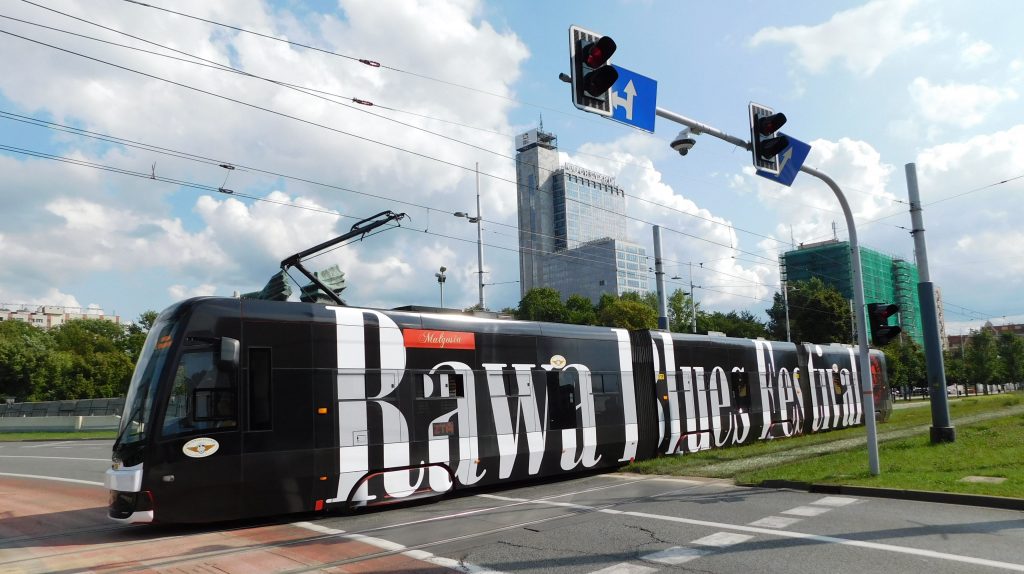
Advertisement of the RAWA BLUES festival on a tram - megatram format
Another example of campaigns promoting culture and using transit media for this purpose is the campaign of a multimedia exhibition of Van Gogh's works taking place in the industrial spaces of the Wilson Gallery in Katowice. This unusual exhibition was intensively advertised at the back of buses (so-called fullback format).
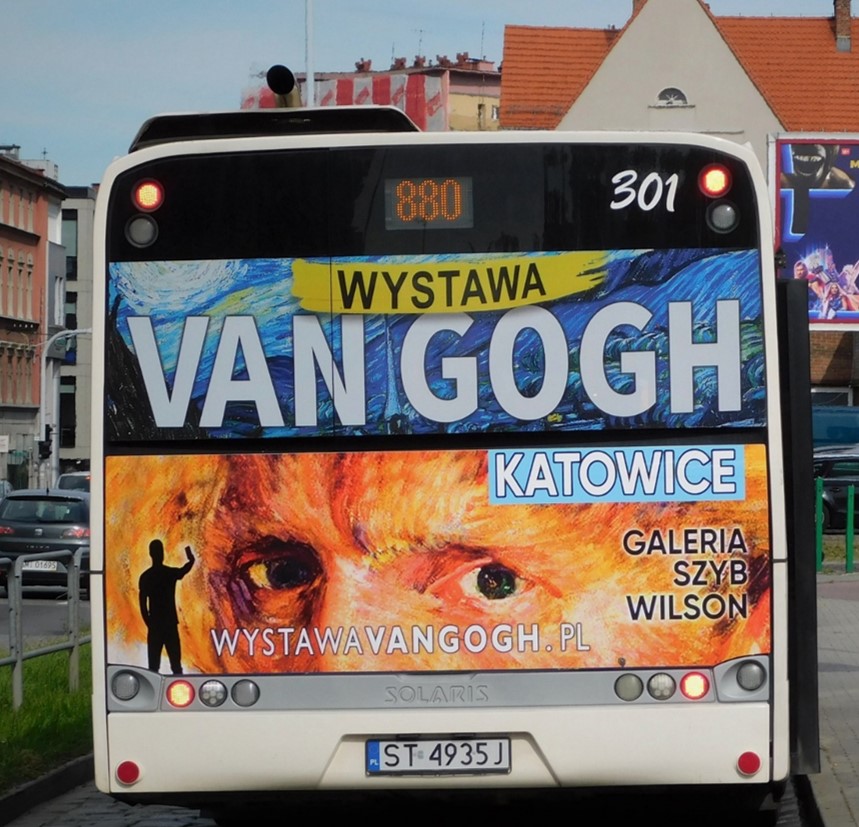
Fullback with an advertisement for an exhibition of Van Gogh's works
Citylights with a repertoire
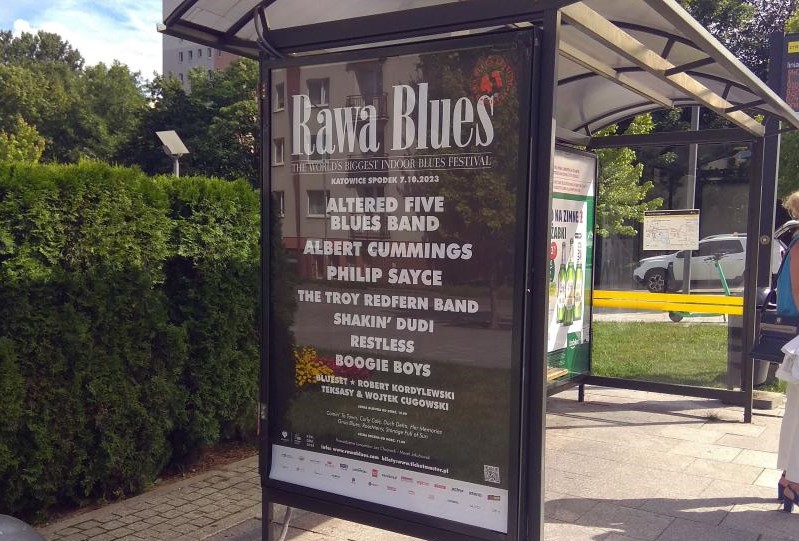
Festival repertoire on the CLP poster
Citylights belong to the group of outdoor media that are characterized by a relatively long contact time of the recipient with the message. Since the majority of citylight panels are located in public transport stop shelters, the recipient - while waiting for an approaching bus, tram or trolleybus - has a lot of time to become familiar with the content of the message on the CLP poster. For this reason, theaters, operas and philharmonics are especially fond of citylight campaigns when it comes to culture. These institutions often decide to make long-term reservations of media that they use throughout the year - regularly changing the poster layout along with the changing repertoire. On the presented posters, the recipient can get acquainted with the theater's offer for the entire season, find out on what dates individual performances will be performed, check the cast, etc. Another effective solution is to place a QR code on the poster, which, when scanned, takes the recipient, e.g. , where you can purchase tickets. In this way, advertising on citylights fulfills several functions at the same time: informational, promotional, image-building, and also sales. This combination of the offline and online worlds makes the message more attractive and provides greater communication opportunities. Additionally, it invites the recipient to perform a certain activity (scan the code, go to the website, book tickets, etc.). And these activities can, in turn, be used to measure the effectiveness of the outdoor message.
Only advantages!
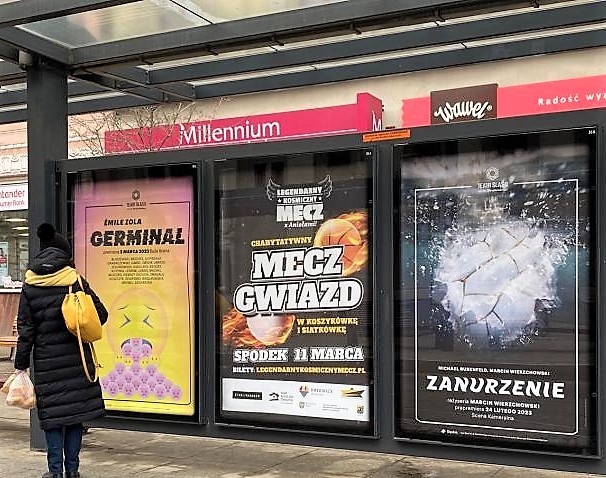
A series of citylights advertising cultural events













